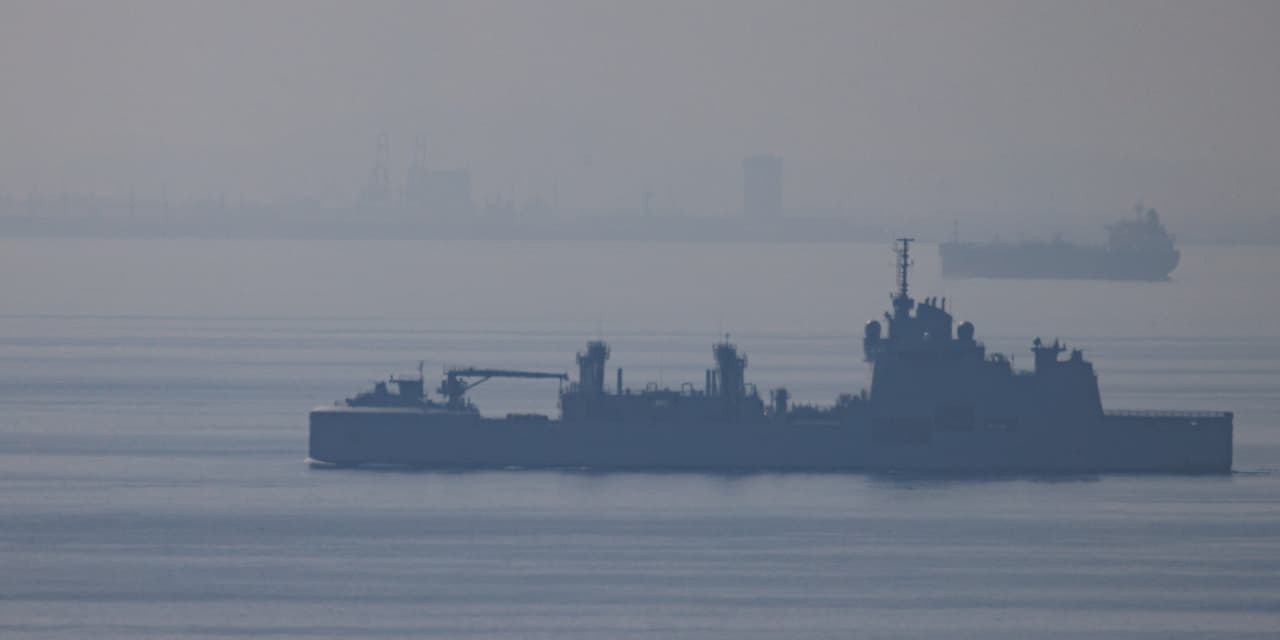While the Houthi attacks on cargo ships in the Red Sea have impacted global supply chains, U.S. retailers are better positioned to deal with the disruption than their European counterparts, according to Moody’s Investors Service.
The Red Sea attacks, which were launched by Iranian-backed Houthi rebels in October, have resulted in longer transit times for cargo as ships that would have transited the Suez Canal use alternate routes. In recent testimony on Capitol Hill, the National Retail Federation said that rerouting cargo around South Africa’s Cape of Good Hope adds 10 to 14 days to its members’ supply chains.
“European retailers that source maritime product imports from Asia rely heavily on the Suez Canal,” wrote Moody’s analyst Christina Boni in a note released Wednesday. Some of the major European apparel companies that rely on Asian market imports include Adidas AG
ADS,
and Next PLC, she added. In January, British clothing seller Next warned that the attacks could disrupt the company’s supply chains and delay U.K. deliveries by up to two and a half weeks.
Related: Red Sea shipping disruptions would be much worse if not for these factors, logistics expert says
The Suez Canal, which connects the Red Sea to the Mediterranean, is a critical artery for global trade. In the first half of 2023, trade going through the Suez Canal represented about 12% of global trade, including 30% of container traffic, 10% to 15% of global seaborne cargo and 8% of global liquefied-natural-gas shipments, according to the International Monetary Fund.
However, U.S. retailers that import from Asia can also use the West Coast before moving products east by rail, according to Moody’s Boni. “Although U.S. retailers tend to rely heavily on maritime imports from Asia, many have the ability to divert deliveries from the East Coast and Gulf — the port of call for ships through the Panama and Suez Canals to the West Coast, where they can use rail networks,” Boni said.
Boni explained that many U.S. companies successfully pivoted during the COVID-19 pandemic in the opposite direction, from West Cost ports to the East and the Gulf, when the risk of a strike loomed at West Coast ports in 2022, without pushing costs much higher. “We expect companies can now shift product successfully to the West Coast because conditions are even more favorable than during the pandemic,” she added.
Related: Red Sea container traffic is down almost 30% amid Houthi attacks, says IMF, as experts weigh wider impact
But if shipments aren’t rerouted quickly, then the prompt delivery of spring and summer fashion collections is potentially at risk, the analyst warned. This could be a negative for apparel and clothing companies such as Abercrombie & Fitch Co.
ANF,
and Gap Inc.
GPS,
she added.
“Air freight is a more expensive alternative but brings in product faster should the need arise,” the analyst wrote, noting that this is better suited to luxury retailers such as Coach owner Tapestry Inc.
TPR,
Capri Holdings Ltd.’s
CPRI,
Michael Kors and Tory Burch.
“Nonetheless, larger companies with relatively more sophisticated supply chains are best positioned to pivot faster,” Boni added. “The risks are greater for smaller operators with high import exposure for low cost products, should contracts be renegotiated at higher levels. This is because they could once again see a significant increase in their cost structure after finally benefiting from lower freight rates.”
Related: Red Sea disruption forces retailers to rethink back-to-school and holiday shipments
Arts-and-crafts companies such as Joann Inc.
JOAN,
the Michaels Companies and Harbor Freight are examples of companies where profitability could be materially impacted, according to Boni. Companies in the home-goods and furnishing category, including At Home and BDF Acquisition Corp., are already contending with lower demand and are vulnerable to future increases, she wrote.
Last month, the National Retail Federation warned that the disruption caused by the Houthi attacks was forcing U.S. retailers to rethink how they handle back-to-school and holiday shipments.
Experts have also warned of the impact of drought conditions affecting the Panama Canal on global supply chains.
Related: Red Sea and Panama Canal disruptions may snarl supply chains, but these two toy makers appear well-positioned
Read the full article here




